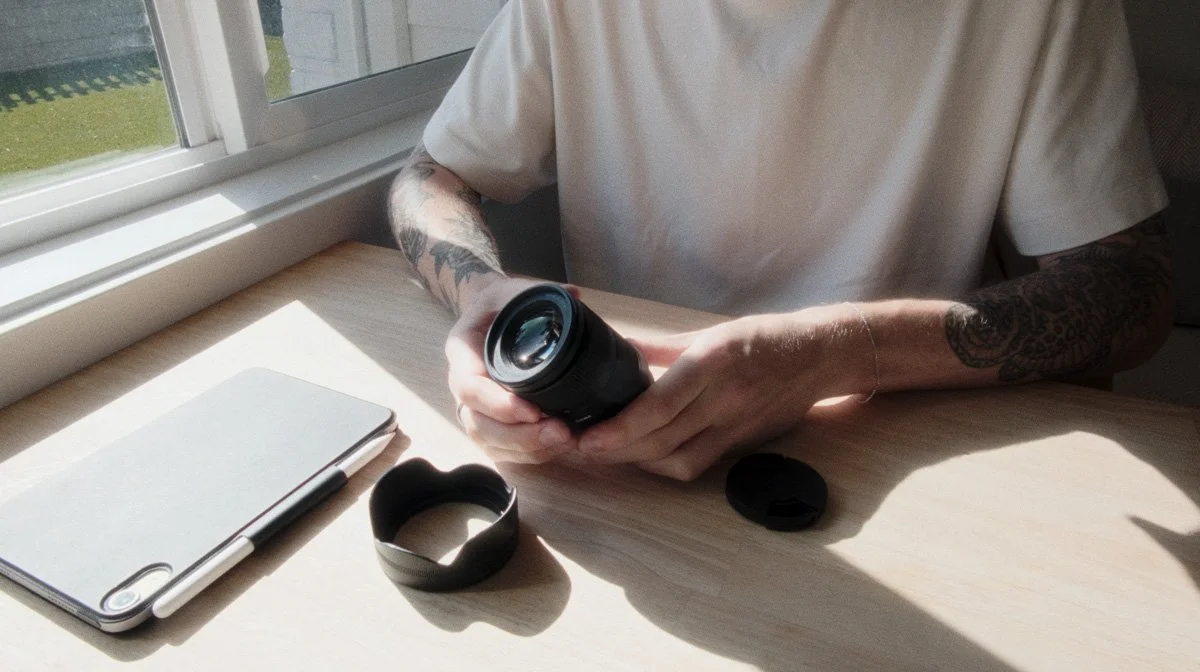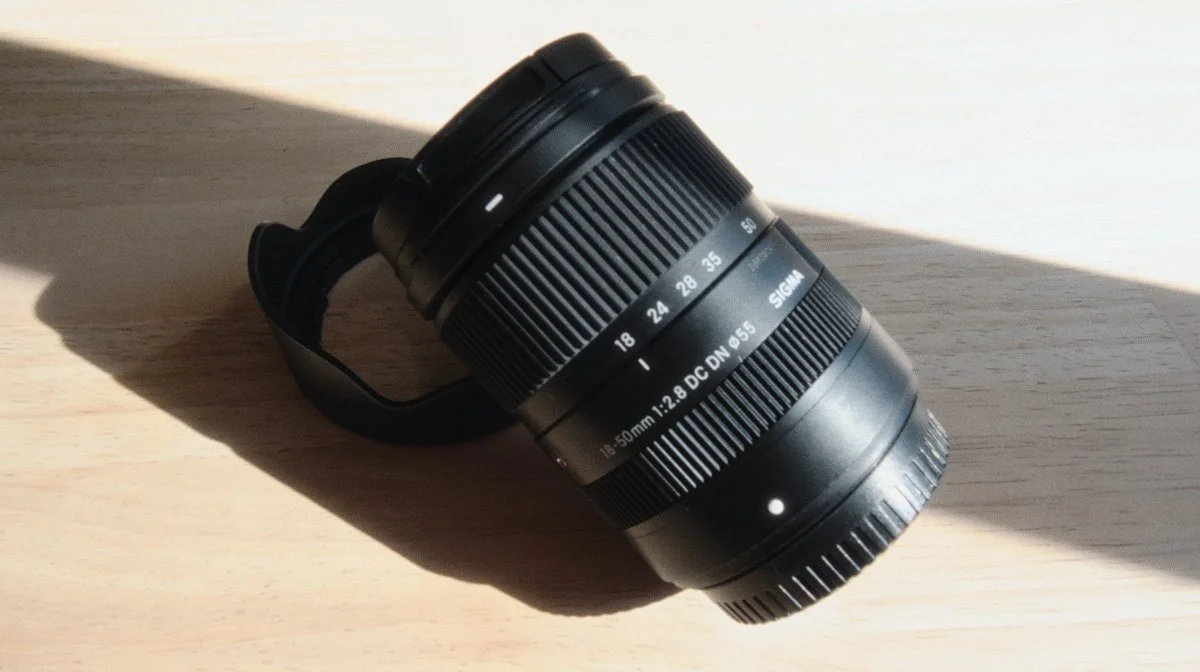The Sigma 18-50 f/2.8 is Perfect. Until It’s Not.
The Sigma 18-50 f/2.8 is the kind of lens that every single photographer needs to have in their bag. In fact, in every way that really matters to me day to day, it’s approaching perfection.
So instead of properly “reviewing” this thing, which would mainly consist of me trying and failing to find a problem with it, I want to talk about how it works in my workflow, and when I think you should actually… put it down and shoot with something different.
Context/My Use Case
I’m a full-time traveler and street photographer/filmmaker, making videos over on YouTube as well.
In fact, this blog started out as a video, so if you’d prefer to watch, I’ve got you covered there too.
I have owned this lens for years now, and have taken thousands and thousands of photos with it in tons of locations across oceans and right down the street.
Sigma 18-50 f/2.8 for Video
This lens is quite good for video, though it should be said that it isn’t the absolute best option out there.
Cinema lenses exist for a reason, but short of switching to a Cristopher Nolan-approved setup, this thing is pretty great, and the limitations, like digital distortion compensation while zooming, and focus breathing, are relatively easy to work around.
Long story short, I’m happy with it overall for stills and for video, but keep your expectations reasonable. There will never be a budget-friendly, fast-aperture, standard zoom lens that performs like a cinema zoom.
Now, for my money, living out of a suitcase and all? Not sure there’s anything else in the world at this price, size, & weight that approaches the same performance as Sigma’s 18-50.
My VERY Brief Sigma 18-50 f/2.8 Review
I don’t think there’s much of a point in going into tons of detail or looking at corner sharpness at f/16 or whatever. It’s been out for years and has been reviewed to death by much more technically inclined folks.
If you are interested in a proper real-world review from my perspective as a traveling hybrid shooter, I’ll give you my rapid-fire 2 cents right now.
Here’s what I’ve noticed after years of using this lens:
Negatives
Build quality is mediocre; it’s plasticky, I wish it were more solid and made of metal in a perfect world, though I appreciate and acknowledge that this build keeps things small and light, as well as affordable.
No aperture ring- probably the worst thing about this lens in my eyes as a Fujifilm shooter. Still workable and not a huge deal, but over on X-Mount, you get very used to (and spoiled by) aperture rings on most lenses. Your mileage will inevitably vary depending on how much you care about that specific detail.
No stabilization. This doesn’t affect me personally, as I use it with the Fujifilm X-H2s, and that body’s IBIS is fantastic, but worth mentioning nonetheless, as there are plenty of IBIS-less bodies out there that accept this lens.
Postives
Weather sealing, though I’m not extremely confident in it, given the lackluster build quality, has held up for me just fine in snow, sleet, rain, dust, and sea spray.
It’s sharp. Throughout the entire zoom range and at any aperture, though you should note that I don’t shoot a whole lot below f/4 or 5, and I am very frequently at f/8 or above, for stills at least.
It focuses super fast and silently, especially as it was designed to take advantage of not just Fujifilm’s antiquated AF, but much more advanced systems like Canon and Sony as well.
Verdict
Perhaps I’ll upgrade to Fuji’s 16-55 just for the much-improved build quality and aperture ring one day, especially if I have the chance to test one and find the image quality noticeably better in photo, video, or both.
That said, I’d have a hard time justifying the extra size and weight for only incremental improvements.
In short, something else would have to blow me away and remain relatively compact. No way I’m ditching this perfect little package for a 5% performance bump.
The Truth About Zoom Lenses
As you’ve likely gathered, I’m not much of a technical reviewer.
If I’m talking about gear on YouTube or over here on the blog, it’s usually because I want to have a conversation about how a camera or lens makes me feel or how it impacts my larger workflow, not the number of megapixels, or flux capacitors, or chromatic aberration in the corners when shooting directly into the sun at f/16.
I just don’t care.
So here’s where I’ll say that: While I think everyone should have this lens or a lens like it, I don’t think this should be anyone’s ONLY lens.
Maturing as a photographer is realizing that a zoom lens will never ever ever replace a prime lens, especially a prime lens you know like the back of your hand.
I also feel that primes are a critical part of learning how to compose images and becoming a better photographer in general.
Zoom lenses are massively practical tools in a lot of situations, but they’re also apt to make you lazy and unimaginative.
The Skeleton in the Sigma 18-50’s Closet? It Zooms.
I’m not pretentious. I won’t be the geezer on Facebook telling you (WITH CAPS LOCK ENGAGED) that street photography isn’t real street photography unless you have a manual-focus 35mm prime slapped on a vintage Leica with a broken light meter and you’re out in New York City with a safari vest on, actively attempting to become the victim of a completely justifiable physical retaliation from your subjects.
Primes are simply better in nearly every way.
Objectively and technically speaking, they’re sharper, faster, smaller, have less distortion, rely less on digital corrections, are usually cheaper, and typically have more competition/options on the market to choose from.
Very basically, the only thing a zoom has going for it is that it zooms. You make sacrifices in every single other category for that one feature.
(This is where it DOES get subjective)
I say this with lots of love: Primes are much more fun to compose with.
Limitation fosters creativity, you’ve heard it before, and for good reason, because it happens to be true.
Familiarity with a particular focal length is an irreproducible phenomenon.
Now I’m beginning to sound a bit like the Facebook geezer, just in lowercase, I hope.
In practice, when you don’t have to select a point in your zoom range, you have that much more brainpower to focus on finding compositions that are actually interesting to your eventual audience.
So… Should I Buy It or Not?
A piece of advice (from someone who is very proud of how far I’ve come as a photographer in past years, but someone who also has so much work left to do), take it or leave it.
If you’re new to photography or finding composition difficult, buy this lens (or one like it), shoot with it for a year or so, and then go through your [insert photo editing software of choice] catalog and see what focal lengths your absolute favorite shots were taken at.
Then, your mission, if you choose to accept it, is to go out to your local camera store, or fire up Google and pick up a prime lens or two that correspond to your most-used/loved focal lengths, and leave the zoom at home for a period of time while you figure out how to make really cool stuff with your shiny new prime(s).
It’ll be challenging, I remember nearly giving up on my first prime. Hated it completely for a while. But different tools are for different jobs.
In my mind, the Sigma 18-50 is a power drill, whereas my prime lenses are paintbrushes.
I don’t love the Sigma 18-50 like I love my prime lenses, but it’s an absolutely non-negotiable member of my photo kit for video, photo, street, travel, and everything in between.
It’s what I have with me when I either don’t want to think too hard, can’t change lenses, or can’t miss any shots.
Thanks, as always, for reading
Agree? Disagree?
Want to discuss something completely unrelated, like my favorite breweries in a city I’ve recently visited?
Have no fear, I’m probably online, whether I want to be or not ⬇️








